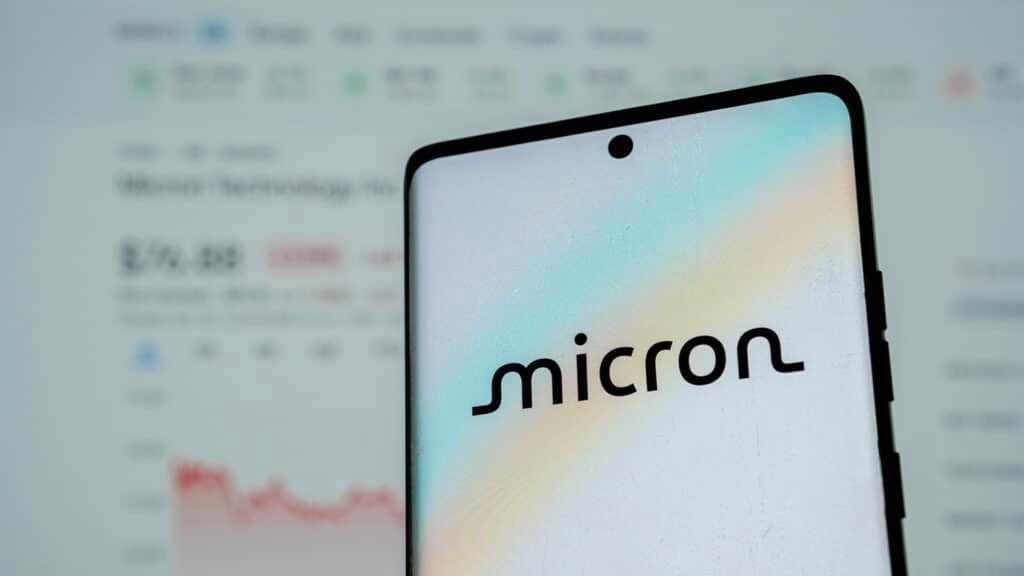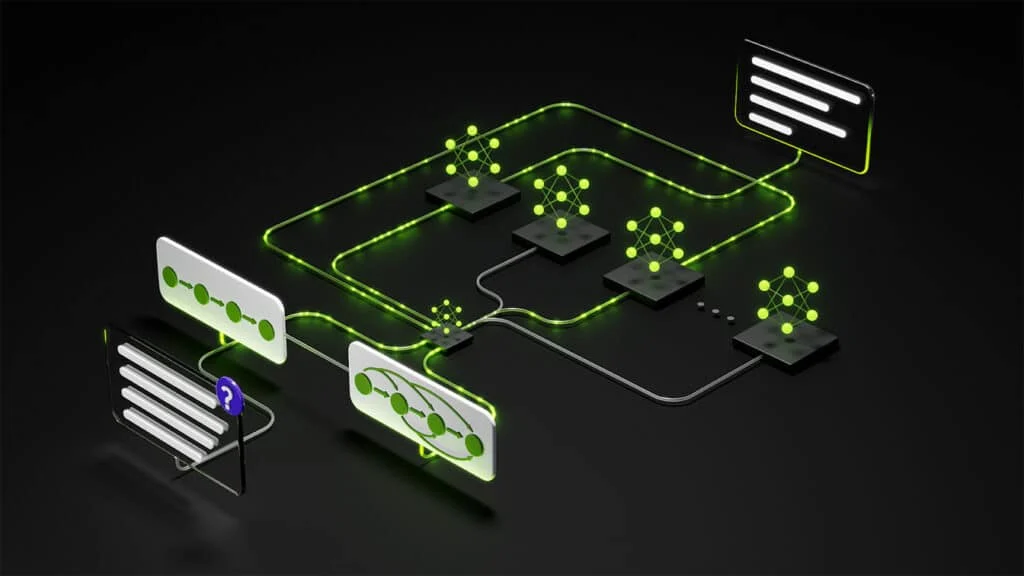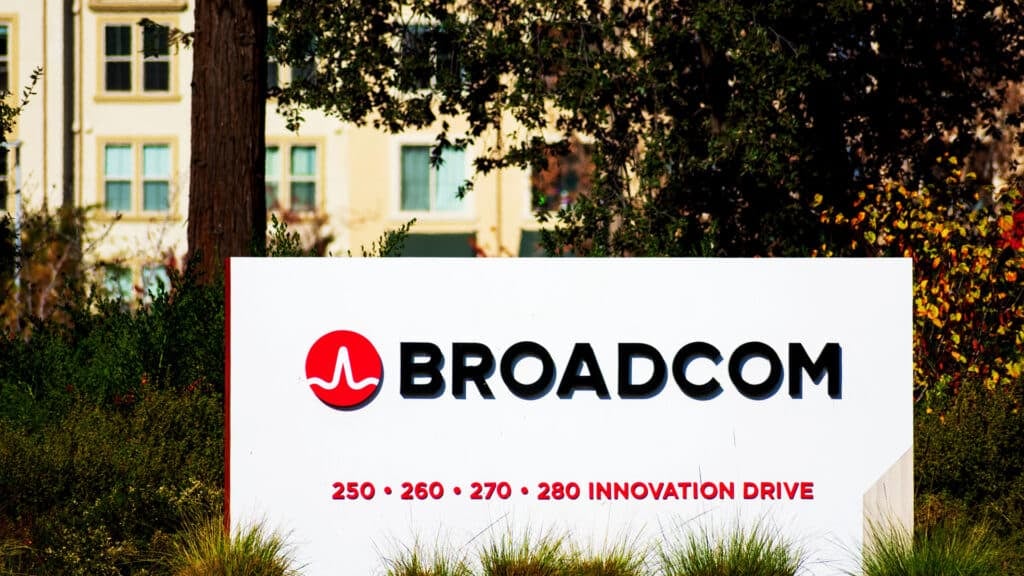Analyst(s): Ray Wang
Publication Date: July 10, 2025
Dell’s first-to-market delivery of NVIDIA GB300 NVL72 systems to CoreWeave pushes the performance envelope for AI reasoning workloads and sets a new bar for liquid-cooled rack-scale infrastructure.
What is Covered in this Article:
- Dell becomes the first vendor to deliver NVIDIA GB300 NVL72 systems, just seven months after shipping the GB200 NVL72
- CoreWeave deploys these systems to expand its AI cloud platform, in collaboration with Switch and Vertiv
- Each rack features 72 NVIDIA Blackwell Ultra GPUs, 36 Grace CPUs, and 36 BlueField DPUs, enabling more than one exaflop of dense AI performance
- The platform achieves up to 10x user responsiveness and 50x inference output versus prior architectures
- Futurum expects GB300 production and shipment to ramp in Q4 2025, based on the supply chain research
The News: Dell Technologies has delivered the first-ever NVIDIA GB300 NVL72 systems to CoreWeave, marking a step forward in rack-scale AI infrastructure. This rollout follows Dell’s earlier launch of the GB200 NVL72 and reflects the strong ongoing partnership between Dell, NVIDIA, and CoreWeave.
Each rack packs 72 NVIDIA Blackwell Ultra GPUs, 36 Grace CPUs, and 36 BlueField DPUs, offering up to 1.1 exaFLOPS of FP4 inference and 0.36 exaFLOPS of FP8 training power. The systems come preassembled, liquid-cooled, and fully integrated with CoreWeave’s orchestration stack, enabling massive-scale support for LLM training, inference, and agent workloads.
Dell Launches Early AI Infrastructure Offering for Enterprise Demand
Analyst Take: Dell’s early launch of the NVIDIA GB300 NVL72 platform signals ODM pushing for a new generation of Blackwell series GPUs, namely Blackwell Ultra, or GB300. CoreWeave, one of the leading neo-cloud providers with close collaboration with NVIDIA, is the first to bring the system online, backed by help from Dell, Switch, and Vertiv. This new setup boosts CoreWeave’s AI cloud, built to power large language models, real-time inference, and large-scale reasoning. It also reinforces Dell’s capability as one of the leading ODMs to deliver complex rack-level solutions from NVIDIA.
While major OEMs have not yet shipped GB300 at this stage, the initial deployment at CoreWeave serves as an early signal of industry adoption in the near future. We expect the production and shipment of GB300 to ramp up starting in Q4 this year. Based on Futurum’s research on Taiwanese OEMs, GB200 shipments began ramping meaningfully in April, and we expect a similar trajectory for GB300. Based on our research across the supply chain, we anticipate a material acceleration in GB300 shipments beginning in Q4 2025 and extending into Q1 2026.
As NVIDIA accelerates its product refresh cycle, monitoring the implications of the forthcoming transition from GB200 to GB300 over the next several quarters is increasingly essential. While GB200 shipments are expected to continue ramping in the near term, GB300 is set to begin a gradual volume ramp in Q4 2025. This transition may influence customer adoption behavior, timeline, procurement timing, and NVIDIA’s quarterly performance.
Dell Doubles Down on Full-Stack Engineering
Dell’s GB300 NVL72 racks combine compute, networking, and storage into one ready-to-go system built for quick deployment. Each one delivers more than one exaFLOP of FP4 inference, with 72 Blackwell Ultra GPUs, 36 Grace CPUs, and 36 BlueField DPUs, all optimized for compact, high-power performance. Fast interconnects like NVIDIA’s Quantum-X800 InfiniBand and ConnectX-8 SuperNICs support GPU speeds of up to 14.4GB/s – twice the speed of earlier setups. It’s the second time Dell has been first to market with NVIDIA’s latest GPU platform, showing how prepared it is to deliver at scale.
CoreWeave Expands First-Mover Advantage
CoreWeave is keeping up its streak as the first to launch top-tier AI infrastructure, this time with the GB300 NVL72, adding to earlier rollouts of the HGX H100, H200, and GB200 platforms. These new racks are liquid-cooled and fully integrated with CoreWeave’s in-house stack, including Kubernetes service (CKS), Slurm on Kubernetes offering (SUNK), Rack LifeCycle Controller (RLCC), and links to Weights & Biases – allowing rack-scale observability. Performance-wise, it offers 10x better responsiveness, 5x more throughput per watt, and 50x the inference output of the previous generation. CoreWeave’s tight collaboration with Dell, NVIDIA, Switch, and Vertiv helped bring the system online quickly. As GB300 is likely to be deployed widely in CoreWeave in late 2025 and early 2026, we can expect CoreWeave to offer an even wider range of compute options with cutting-edge solutions for customers.
A Performance Milestone for AI Reasoning
The GB300 NVL72 is designed to address complex inference and reasoning workloads, setting a new bar for test-time scaling. With 21TB of high-bandwidth GPU memory and 130TB/s of NVLink bandwidth, it enables smooth multi-GPU communication and large batch execution. Each rack can draw up to 1,400W per GPU, making the liquid-cooled design critical for keeping things cool and stable. Compared to the GB200, this platform offers 1.5x more FP4 compute density and GPU memory, making it a better fit for huge, complex AI models. These updates cement the GB300 NVL72 as a go-to choice for the next generation of AI infrastructure.
We expect Blackwell GB300 to deliver a significant performance boost for AI model training and inference amid the rise of reasoning models and AI inference, which require significant compute demand and memory requirements in AI hardware.
What to Watch:
- CoreWeave’s global deployment of GB300 NVL72 systems starting from Q4 2025
- GB300’s production yield, shipment timeline, and impact on NVIDIA’s quarterly performance
- Refresh cycles of GB200 platforms and resulting implications for NVIDIA GPU demand
- Uptake of Dell rack-scale systems by additional AI-focused cloud providers
- Integration depth between Dell infrastructure and cloud-native software stacks
See the complete press release on the Dell and CoreWeave deployment of NVIDIA GB300 NVL72 on the Dell Technologies website.
Disclosure: Futurum is a research and advisory firm that engages or has engaged in research, analysis, and advisory services with many technology companies, including those mentioned in this article. The author does not hold any equity positions with any company mentioned in this article.
Analysis and opinions expressed herein are specific to the analyst individually and data and other information that might have been provided for validation, not those of Futurum as a whole.
Other insights from Futurum:
Dell Q1 FY 2026: Robust AI Server Sales, Guidance Lift Despite EPS Miss
Dell Tech World 2025 – Is It a Good Time To Be in Hardware Again?
Can Dell and NVIDIA’s AI Factory 2.0 Solve Enterprise-Scale AI Infrastructure Gaps?
Author Information
Ray Wang is the Research Director for Semiconductors, Supply Chain, and Emerging Technology at Futurum. His coverage focuses on the global semiconductor industry and frontier technologies. He also advises clients on global compute distribution, deployment, and supply chain. In addition to his main coverage and expertise, Wang also specializes in global technology policy, supply chain dynamics, and U.S.-China relations.
He has been quoted or interviewed regularly by leading media outlets across the globe, including CNBC, CNN, MarketWatch, Nikkei Asia, South China Morning Post, Business Insider, Science, Al Jazeera, Fast Company, and TaiwanPlus.
Prior to joining Futurum, Wang worked as an independent semiconductor and technology analyst, advising technology firms and institutional investors on industry development, regulations, and geopolitics. He also held positions at leading consulting firms and think tanks in Washington, D.C., including DGA–Albright Stonebridge Group, the Center for Strategic and International Studies (CSIS), and the Carnegie Endowment for International Peace.







